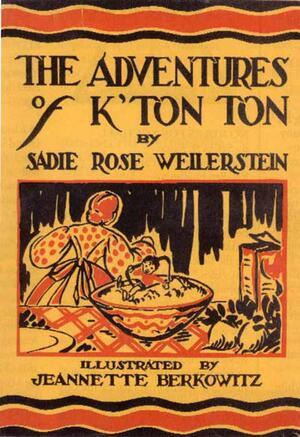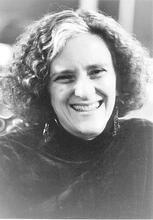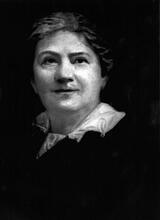Sadie Rose Weilerstein
Sadie Rose Weilerstein was inspired to create the character K’tonton, who became a beloved Jewish story-book hero, while telling stories to her four children. The appearance of K’tonton in Outlook Magazine in 1930 heralded the beginning of a new genre – stories for Jewish children in English. The first version of The Adventures of K’tonton was published by the National Women’s League of the United Synagogue in 1935. By 1964, Weilerstein had published eleven books, which were subsequently translated into several languages and which can be found in many children’s anthologies. The Jewish Book Council of America awarded Weilerstein its annual Juvenile Award in 1956 and 1962, and the Women’s League for Conservative Judaism granted Weilerstein their Jubilee Award for her contributions to Jewish childhood at its 1980 convention.
Article
K’tonton, the lovable little boy who constantly courts danger, whether on the blade of a chopping knife or in a sticky bowl of honey, was the creation of children’s author Sadie Rose Weilerstein. Her books have continued to spike the imaginations of generations of Jewish children since her protagonist’s first harrowing appearance in Outlook Magazine in 1930.
Sadie Rose was born on July 28, 1894 in Rochester, NY, to immigrant parents from Lithuania. Her father, Bernard Rose, was the owner of an optics factory. In 1892 he married Tillie (née Berger, 1872–1951), who worked with him in the family business. In addition to Sadie, the couple had three daughters—Toby (b. 1896), Frieda (b. 1906) and Anna (b. 1908)—and one son, Aaron (b. 1899 or 1900). She attended the University of Rochester, graduating with a B.A. degree in English in 1917, in one of the first classes to admit women. From 1917 to 1920, Sadie taught in the high school for the deaf in Rochester, communicating with students via the then-popular finger alphabet. In 1921 she married Baruch Reuben Weilerstein (c. 1893–1963), a rabbi who had interviewed for a pulpit in Rochester.
After first living in Brooklyn, the couple moved to the Community Synagogue in Atlantic City, NJ, where they remained for many years. Sadie became an active (Yiddish) Rabbi's wife; title for a learned or respected woman.rebbetzin, working in the Sisterhood, writing plays and serving in a variety of offices. But most of her time she devoted to raising their four children, Herschel (Weil, b. 1921), Judith (b. 1924), Deborah (b. 1929) and Ruth (b. 1930). It was in telling stories to them that Sadie was inspired to create the now-famous Jewish story-book hero.
The first appearance of K’tonton in Outlook heralded the beginning of a new genre of children’s literature: stories for Jewish children written in English. Weilerstein’s works included not only the antics of the Jewish Tom Thumb, but also other books incorporating the names of her children as central characters.
Her first version of The Adventures of K’tonton was published by the National Women’s League of the United Synagogue in 1935. By 1964, she had authored eleven books, which were subsequently translated into several languages, including Hebrew, and can be found in many children’s anthologies.
Weilerstein was twice awarded the annual Juvenile Award of the Jewish Book Council of America: in 1956 for her “cumulative contribution to Jewish juvenile literature,” and in 1962 for Ten and a Kid. At its convention in 1980, the Women’s League for Conservative Judaism granted her their Yovel (Jubilee) Award for her contribution to Jewish children.
Selected Works
What Danny Did: Stories for the Wee Jewish Child. New York: Bloch Pub. Co., 1928
The Adventures of K’tonton. New York: National Women’s League of the United Synagogue, 1935
What the Moon Brought. Philadelphia: Jewish Publication Society of America, 1942
The Singing Way: Poems by Sadie Rose Weilerstein [reprinted as: The Singing Way: Poems for Jewish Children]. New York: League Press, 1946
Little New Angel. Philadelphia: The Jewish Publication Society of America, 1947
Molly and the Sabbath Queen. New York: Behrman House, 1949
Jewish Heroes, Book One. New York: United Synagogue Commission on Jewish Education, 1953
Dick the Horse that Kept the Sabbath. New York: Bloch, 1955
Jewish Heroes, Book Two. New York: United Synagogue Commission on Jewish Education, 1956
Ten and A Kid. Philadelphia: Jewish Publication Society of America, 1961
K’tonton in Israel. New York: National Women’s League of the United Synagogue of America
K’tonton on an Island in the Sea. Philadelphia: Jewish Publication Society of America, 1976
K’tonton in the Circus. Philadelphia: Jewish Publication Society of America, 1981
Krasner, Jonathan B. “A Recipe for American Jewish Integration: The Adventures of K’tonton and Hillel’s Happy Holidays,” The Lion and the Unicorn 27 (September 2003): 344-361.
Krashner, Jonathan B. “Sadie Rose Weilerstein through the Looking Glass: K’tonton and the American Jewish Zeitgeist.” In The Women Who Reconstructed American Jewish Education: 1910-1965, edited by Carol K. Ingall, 117-142. Waltham, MA: Brandeis University Press-University Press of New England, 2010.






